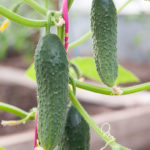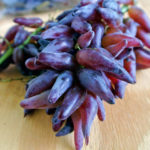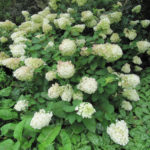Rose Karina (Carina)
Pink shades are the embodiment of sophistication, charm and tenderness. Varietal plants with pink blossoms are worthy to shine in lush flower gardens and magnificent gardens, especially when it comes to roses. The heroine of this article is Karina, who is distinguished by her spectacular appearance and a strong, pleasant aroma.
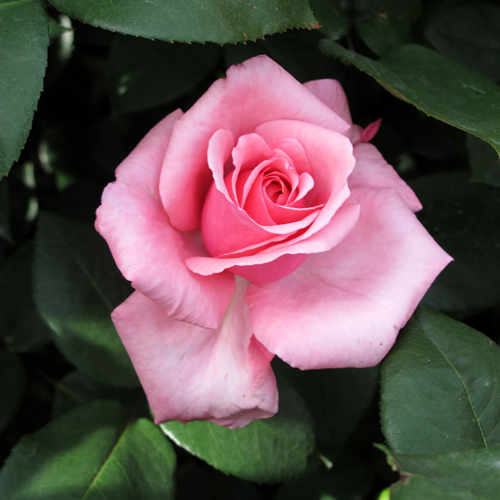
History of creation and description of the variety
This tea hybrid appeared in 1963 in France. It was bred by renowned breeder Alain Meilland. The variety is also found under the name MEIchim. This plant looks like a vigorous bush up to 110 cm high, with strong, erect shoots and large, dense, leathery, with a glossy sheen, dark green leaves. Perennial inflorescences are large: from 10 to 13 cm in diameter. They appear on the stems one at a time or in groups and have a solid, saturated pink tint, often with a coral or lilac tint. Classically shaped buds are formed on elongated pedicels and bloom very slowly. Flower petals do not fade in the sun, which is an indisputable advantage of a rose. Carina blooms in waves throughout the summer, filling the garden with an unparalleled fragrance. The aroma becomes more intense when it rains or when the shoots with flowers are found indoors in a vase.
The peculiarities of the noble plant include good resistance to pests and diseases, including powdery mildew and black spot; average winter hardiness.
Growing and care
Karina is a light-loving culture that should be placed in sunny areas. But, despite the absence of a negative reaction of the inflorescences to the direct rays of the sun, the plant needs shading at midday in the summer. He will also need protection from drafts. To the soil, the rose is quite demanding. Perennial needs fresh, fertile, moisture-consuming, loose soil. The reaction of the soil used for planting the hybrid should be slightly acidic. Ideally, the shrub should be grown on a loamy substrate, but this is not a prerequisite.
For planting, they dig a hole up to half a meter deep. A layer of fine gravel or perlite is laid on its bottom, which serves as a drainage material. Sand, peat and humus can be added to the soil itself. At the end of planting activities, the land under the flower is watered abundantly. In general, the plant should be watered at least once a week. It is important to ensure that the soil under the bush is not overdried or overcompacted. Soil flooding should also be avoided to prevent rotting of the root system. For abundant and lush flowering, it is recommended to feed the culture with a frequency of 2 times a month with mineral fertilizers. This procedure begins with the appearance of buds on the plant and ends two weeks after the perennial flowering. Organic fertilizers are applied under the rose bush only in spring, as soon as Carina enters a phase of active growth.
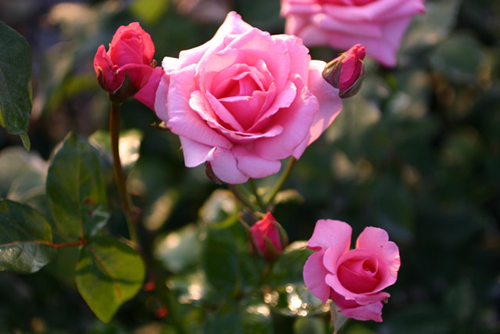
Carina is pruned, like other tea hybrids, for sanitary purposes. They do this in the spring, waiting for the buds to swell on the shoots. Dry and too weak branches are subject to removal. In the fall, the plant is prepared for winter, and here pruning also comes to the rescue. Only this time it is necessary to shorten all the stems of the plant, including healthy ones. The shrub needs good shelter, especially when cultivating it in regions with severe and little snowy winters. Choose a covering material for insulating roses so that your pet does not become a victim of rotting when the air temperature rises.
From insect pests, the flower can damage aphids. They fight it by spraying the bush with an insecticide solution.Diseases in case of their occurrence on the culture are disposed of with the help of fungicidal preparations. It is advisable to perform preventive treatment a couple of times per season.
Tip: to improve the quality indicators of flowering of an ornamental perennial in the year of planting, remove all buds that appear on the plant during the spring-summer period. This will provide the rose with an opportunity to build up its green mass and gain strength for the upcoming flowering next year.
Use cases
The hybrid tea variety Karina is often used for garden design. Here, ornamental flowering shrubs are planted in mixborders, near gazebos, garden benches, in rabatki, along paths. A culture is appropriate in mixed plantings with peonies, irises, lilies, which have inflorescences of contrasting or close to the buds of a French beauty in color shades. The variety fits perfectly into the rose garden. Also, bushes of the Carina variety can be placed along the fence or in the foreground of the site, against the wall of the house. It is the perfect solution for a romantic garden. White bells, pink geraniums, carnations, ornamental bows will make a good company with the culture.
The delicate rose is also loved by florists, therefore they often include it in their flower arrangements. A mono-bouquet made of flowers of an elegant French diva is especially beautiful - it looks stylish, solemn and will serve as a wonderful gift in honor of an important event. Expressive buds stand up to two weeks in water.
